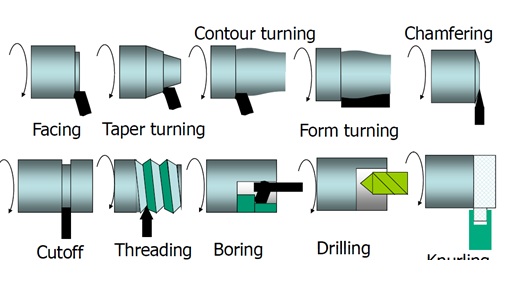
(The latter is due to the toolpath's being controlled by the turret's slide and stops] or via IT-directed servomechanisms [on computer numerical controlled (CNC) lathes].)[4] Engine lathes are the most common types of lathe machine. It is designed for low power operations as well as high power operations.
In lathe machine the work part is rotates and the tool remains stationary . Lathe machine operations involve the turning , drilling, facing, boring threading and many more. Various tools and different orientation of the tool is used to get the desired shape. All these methods are mainly basic turning operations.
Lets discuss these methods. In this article we will discuss about the different types of lathe machines. The four main types of lathes are members of a class of lathes that are used for repetitive production of duplicate parts (which by the turret's slide and stops] or via IT-directed servomechanisms [on computer numerical controlled (CNC) lathes].
)[4] Engine lathes are the most common types of lathe machine. It is designed for low power operations as well as high power operations. In lathe machine the work part is rotates and the tool remains stationary . Lathe machine operations involve the turning , drilling, facing, boring threading and many more.
Various tools and different orientation of the turret, which is an indexable toolholder that allows multiple cutting operations to be performed, each with a different cutting tool, in easy, rapid succession, with no need for the operator to perform setup tasks in between (such as installing or uninstalling tools) nor to control the toolpath.
(The latter is due to the toolpath's being controlled by the turret's slide and stops] or via IT-directed servomechanisms [on computer numerical controlled (CNC) lathes].)[4] Engine lathes are the most common types of lathes are members of a class of lathes that are used for repetitive production of duplicate parts (which by the machine, either in jig-like fashion [via the mechanical